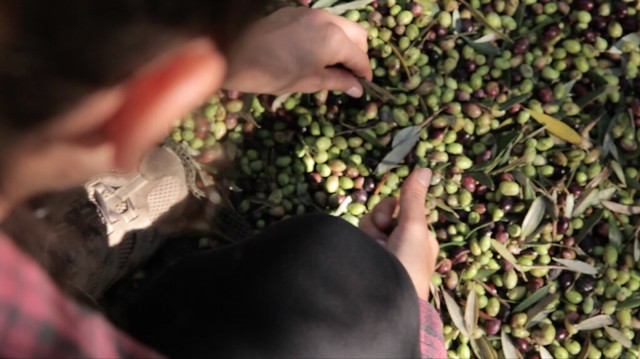Maddie Salters finds her visit to a Cretan olive grove to be both exhausting and meditative.
Welcomed with warm Greek hospitality by the locals in the small Cretan village I’d be living in for five days, I admit, I was spoiled right off the bat. After a welcome meal of fava beans, sour beet root, lime fried mushrooms, tzatziki sauce and bread, dakos, and more (much, much more: the Greek way is all about small mezze taster dishes), I was left daydreaming about which was my favourite. Little did I know that olive oil would be the victor.
The olive groves of Crete are mostly family owned. Sun-drenched, smelling fresh and clean, the space is almost sacred: trees aligned into rows, tall, proud, and fragrant.
Taking on the late season harvest was both exhausting and meditative. I was given a long rake (the “traditional” method) and had to whack olives down off their fickle branches. “It’s harder than it looks” would be an understatement. With sore arms and soaring sense of accomplishment, I gained a deeper appreciation for the fact that it takes 4-5 kilos of olives to make a single litre of oil. After all of the olives drop comes the repose– hours nestled into the grass, picking leaves and twigs from the mounds of purple and tawny green olives. Once the fruit is sorted, it is hand-sew into burlap sacks to be taken to a refinery.
Since Crete consumes more olive oil per capita than anyone else, you know they must be doing something right. One taste of fresh, estate oil proved that. At the small factory I visited, a family run affair, I learned how to cold press the olive skins (which produce the oil) using an ancient method that stamps out the pete. The fresh oil was spicy enough to make me cough, and had almost more kick than a chilli, shocking! Coupled with bread, though, it tamed into a delectable, full-bodied flavour. The mark of a fresh oil is if it burns in the back of the throat– even extra virgin, which has less than 0.8 acidity. Warmed, fresh oil gives off an aroma that sparks against the nose.
The Tsunati olives produced my favourite oils– a little bit lighter than the hearty, deep koroneki. Oddly, the oil pairs well with a stiff cup of coffee – if you’re going on an adventure to do olive harvesting, be sure to take along with you some Greek instant frappe … it’s what all the farmers do, and it’s surprisingly delicious!
Best of All: Your hands are conditioned by the olives as you pick them… score!
Pro Tip: Olive oil is sensitive to light– buying in dark glass bottles is better than light bottles, and tin is best of all.
Read more posts in Maddie’s Create Eats series.























Pingback: Crete Eats: Round Up of Posts